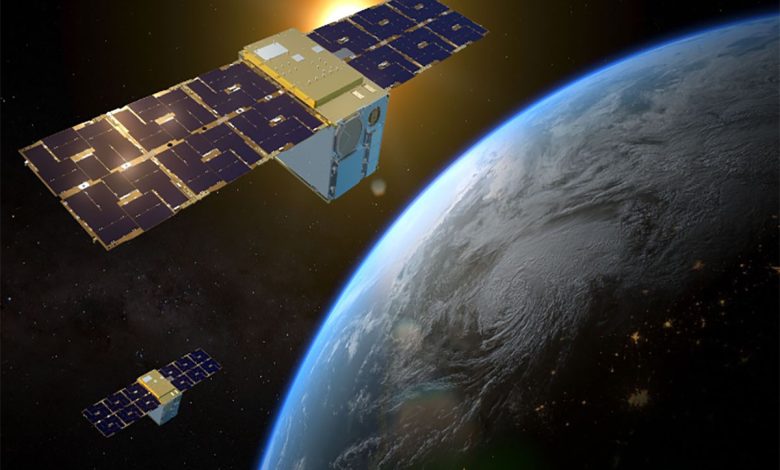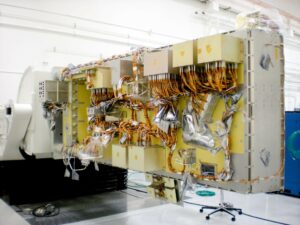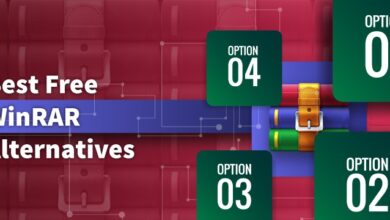Overall Features of Spacecraft Buses

NASA and private space companies are determined to turn us into a multi-planetary species, so it’s no wonder that space tech is evolving. Spacecraft buses, though different in their design, play a major part in our space exploration and Earth monitoring efforts. Satellites and other vehicles would not be able to complete their mission goals without platforms hosting their electronic equipment. Let’s see further what this type of equipment does, what are its characteristics and subsystems, and how many types of spacecraft buses are out there.
What is the function of the spacecraft bus?
A space bus, aka platform, supports the payload and hardware instruments of a satellite or any other spacecraft. We couldn’t send any of these vehicles on space missions without these platforms. A space platform should also ensure that a spacecraft is in perfectly safe conditions and that its payload is not at risk. This mechanism is formed of many subsystems that ensure space missions don’t become compromised. Even if a spacecraft bus cost is high, many companies use a lot of their financial resources to build such structures and prepare them for space missions. Space platforms carrying equipment are the most important parts of all satellites. They’re essential structures that ensure operation in the orbit and connection with ground stations.
What are the characteristics of a spacecraft bus?
A space platform can use different subsystems depending on its type of mission. For example, space companies built satellites for navigation, communication, scientific research, surveillance, mapping, and even security. All of this tech comes with platforms of its own. And, while some structural components of a platform may differ, the main logic and components remain unchanged when systems of spacecraft buses are concerned.
Since the space environment is not at all friendly, space buses must be resistant to severe conditions. It’s also very important that they feature a propulsion system to put space vehicles into orbit and manoeuvre to adjust orbital parameters. Connection with a ground centre, thermal, and altitude control — those are essential spacecraft bus components. These are technological mechanisms necessary for space vehicle operation in orbit. However, there can be more subsystems that cope with different tasks — for example, some satellites carry imagers while others are equipped with infrared sensors.
What Are the Necessary Spacecraft Bus Subsystems in Orbit?

Different types of spacecraft buses use different kinds of subsystems, but the most common, necessary ones include:
- Spacecraft bus power subsystem. This system uses solar panels to turn radiation into electrical power. Some buses use batteries to store energy rather than generate it from solar radiation, while others use a combined approach to power generation. Regardless of the exact power source type, this subsystem communicates with the other subsystems through electrical components and wires, delivering power to all spacecraft’s instruments.
- Thermal control subsystem. Any space bus must be kept within specific temperature parameters. So, the thermal control subsystem ensures that the entire structure doesn’t reach excessively high or excessively low temperatures, which could lead to mission failure. It features electrical resistance heaters, thermoelectric coolers, fluid loops, and cryocoolers. Space buses change their temperature depending on given orbits, power demands, operations, and many different other factors. And for this reason, the thermal control subsystem must be operational at all times.
- Communication subsystem. Using receivers and transmitters, a space bus communication subsystem ensures that a spacecraft communicates with Earth controllers. This is done through radio signals that transmit software commands. Without a communication subsystem on spacecraft buses, satellites would not communicate with each other either. And as you have probably already guessed, the communication subsystem is made of antennae that send all collected data further. Without a communication subsystem, Earth operators would not be able to control a satellite via spacecraft bus.
- Attitude control subsystem. The spacecraft bus couldn’t be oriented or controlled with the attitude control subsystem, which uses sensors to measure altitude and space orientation. Without this subsystem, the spacecraft would not be able to collect and interpret data. The measurements of the attitude control subsystem could be static, which means they have been taken in the past. Or, they could be statistical, which means the subsystem works with the Kalman filter to take measurements in real-time.
Spacecraft buses employ multiple subsystems to send spacecraft and satellites into space and maintain them in orbit. Without these mechanisms, we wouldn’t be able to collect data from our space missions. And so, we wouldn’t be able to become a planet that monitors its own environment from space and plans on building colonies on the Moon and Mars. A spacecraft bus must function perfectly because it ensures the other components of a spacecraft or satellite are functioning properly as well.



